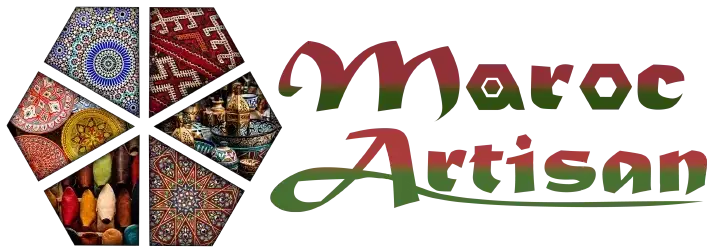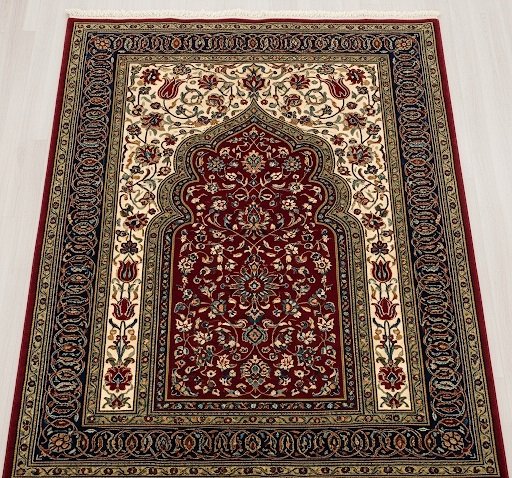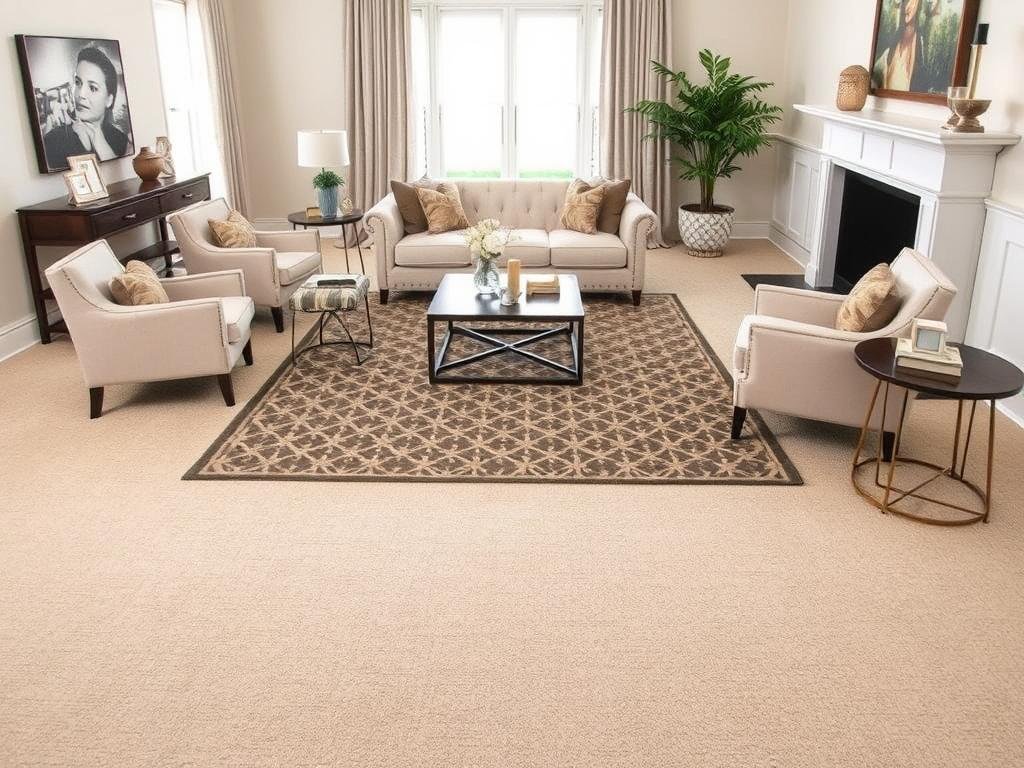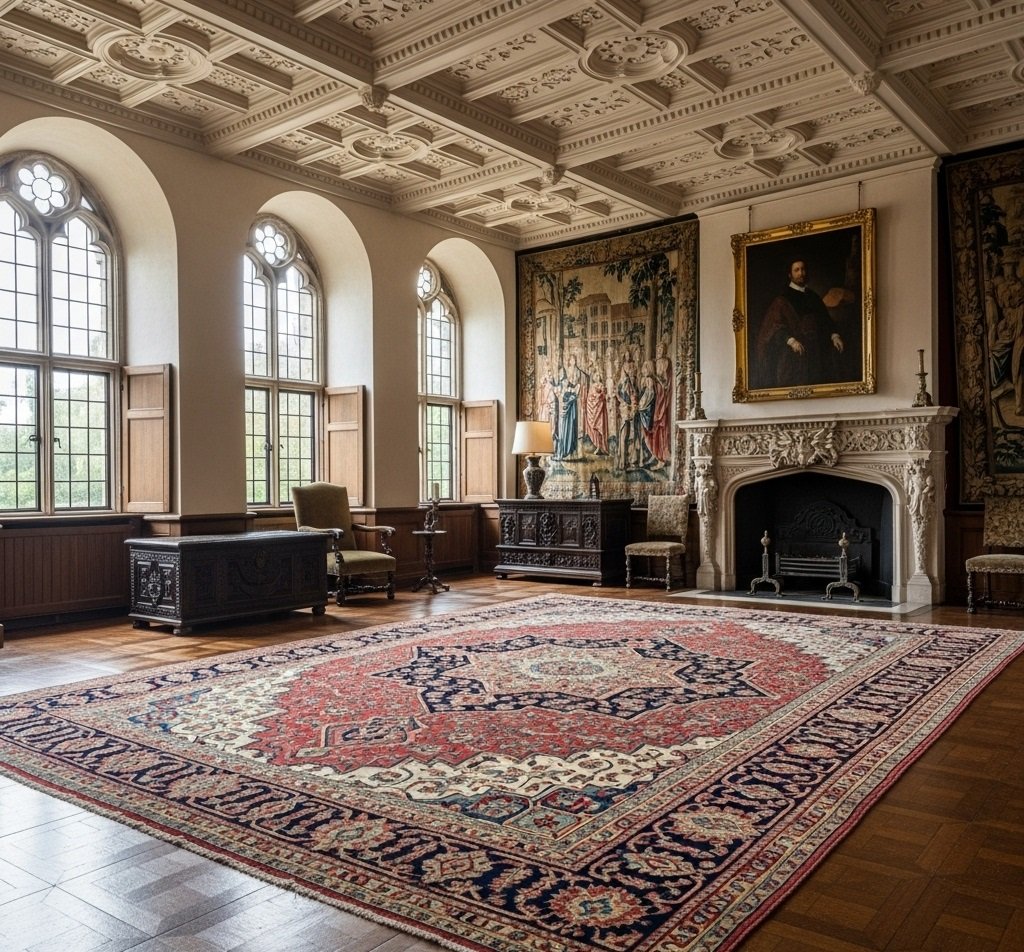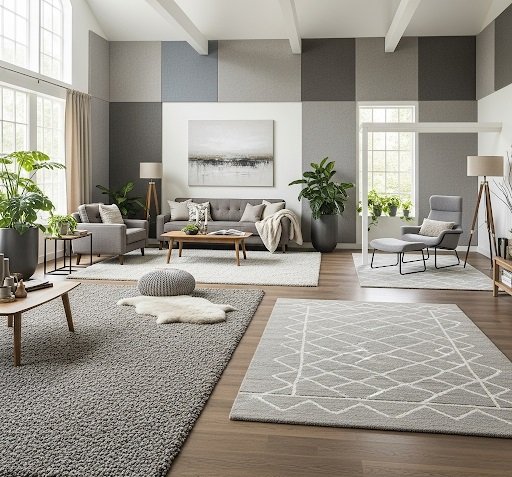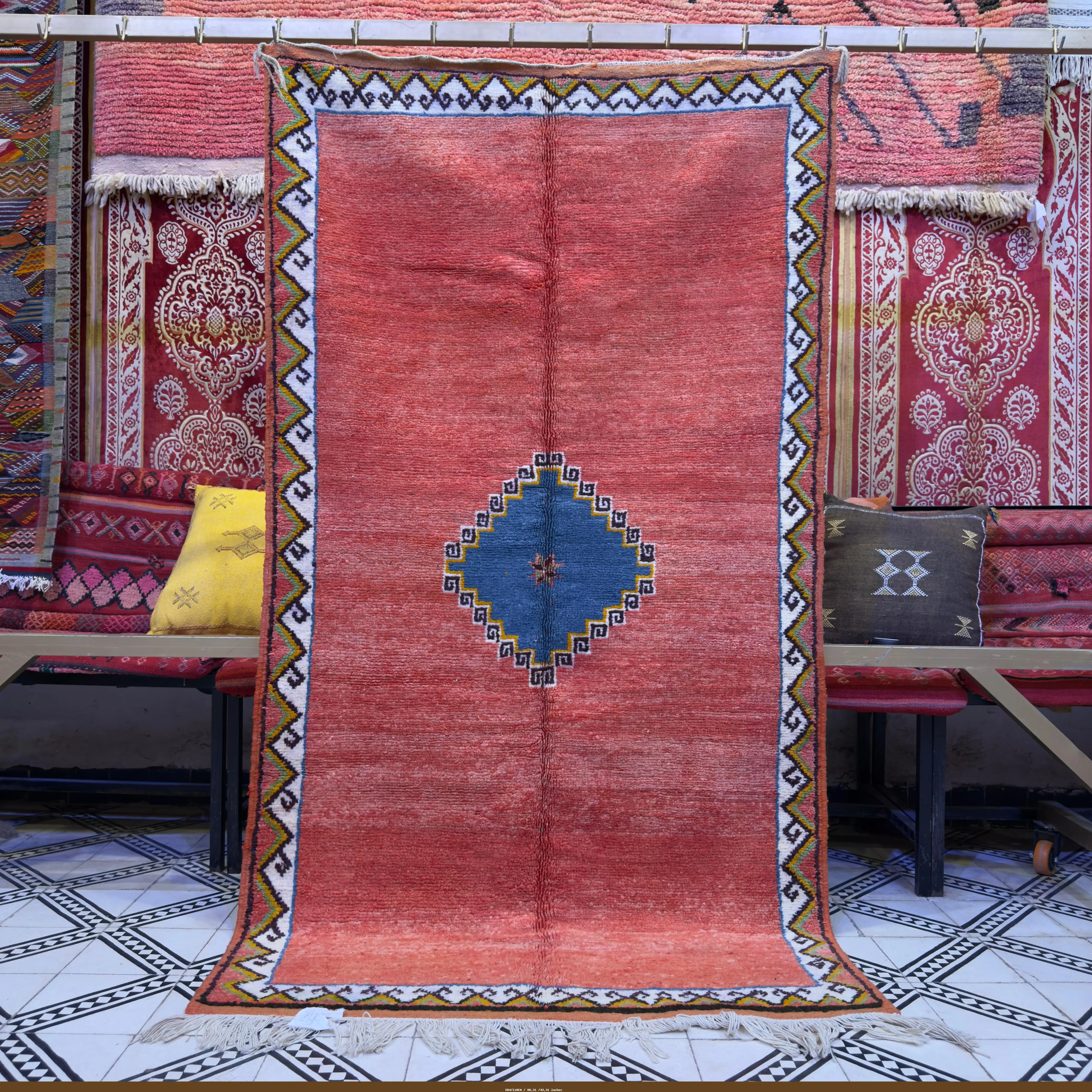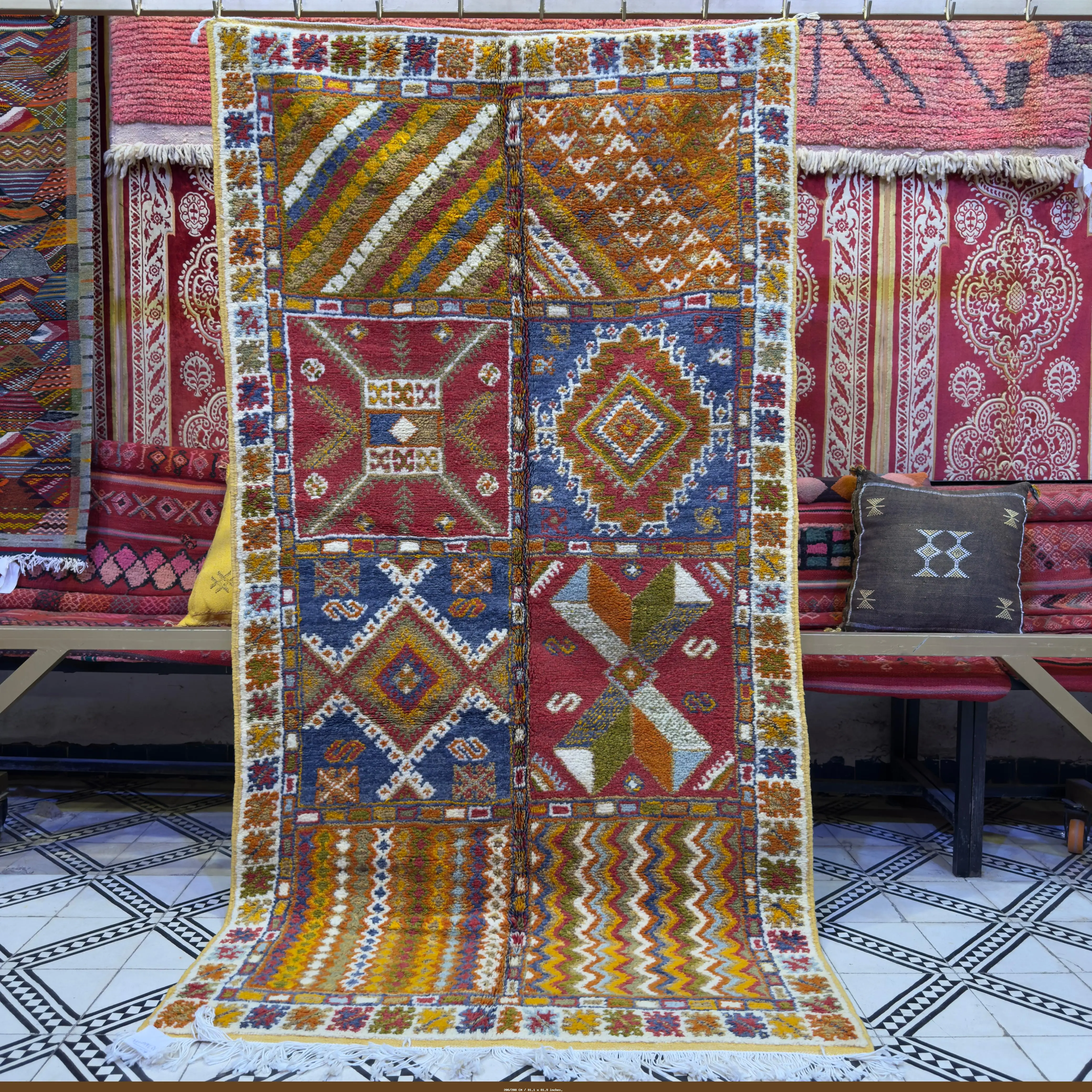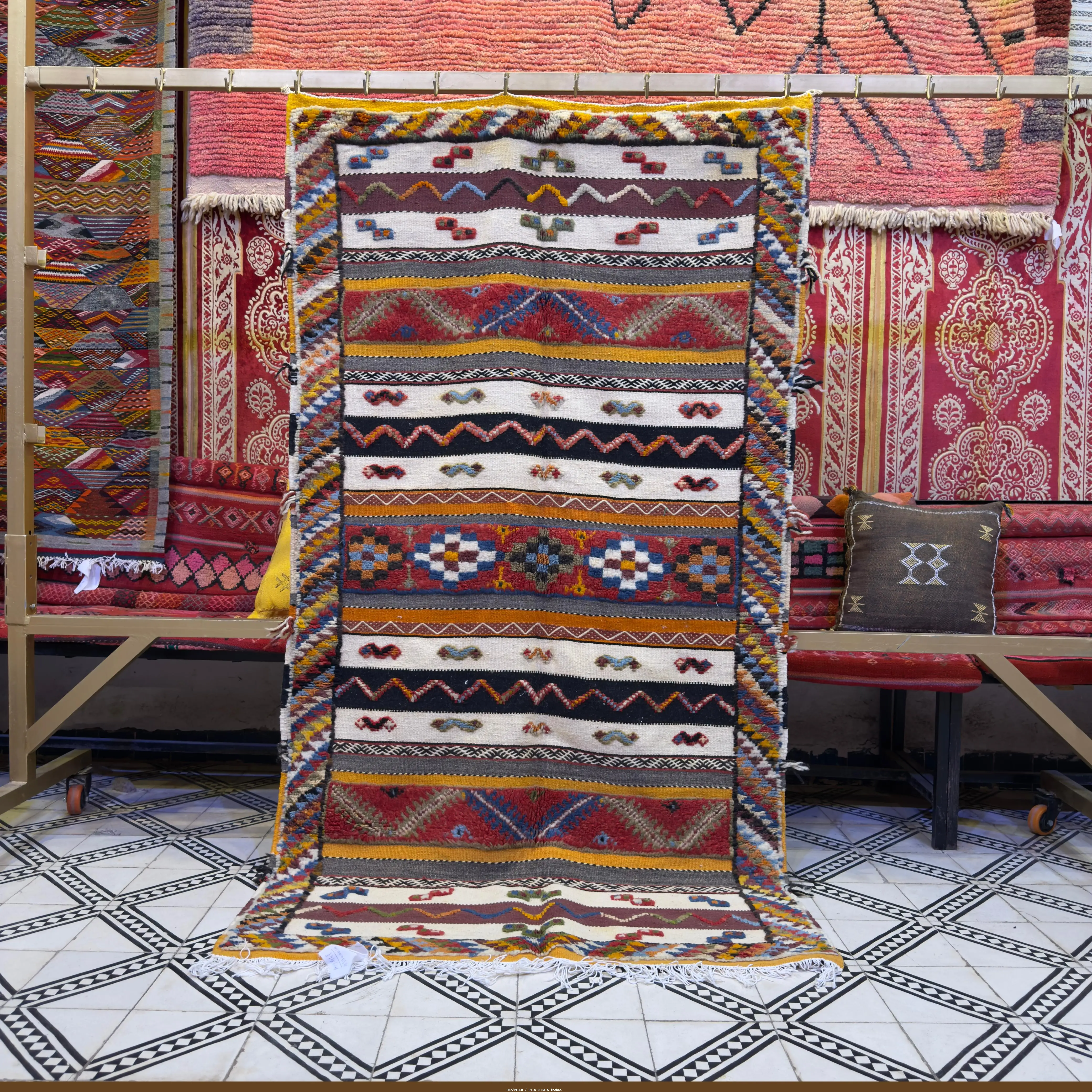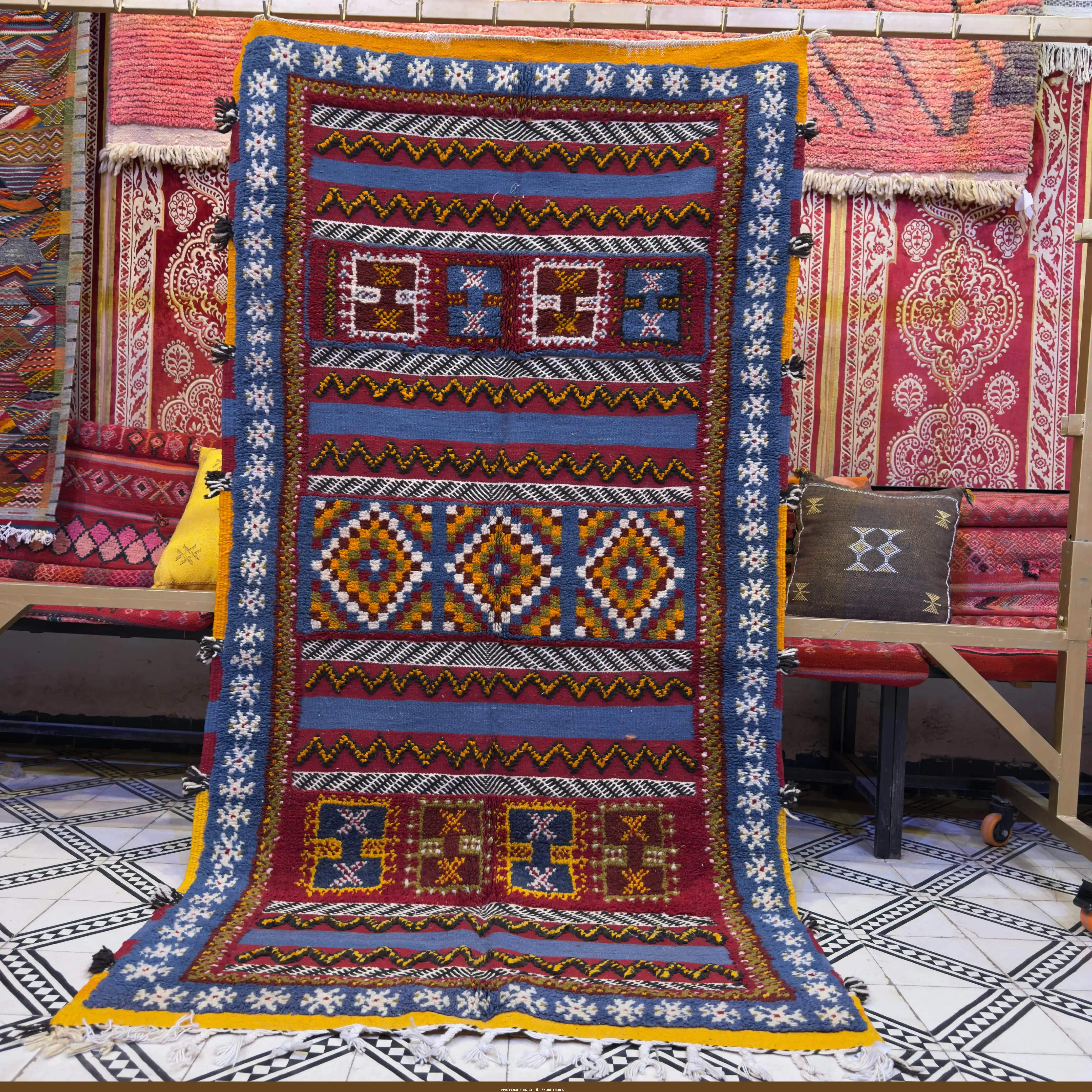For billions of Muslims around the world, the act of prayer (Salat) is a sacred, daily pillar of faith. At the heart of this ritual is a special object that is both a practical tool and a piece of profound artistry: the prayer rug, or sajada. To see it as just a mat is to miss the centuries of history, symbolism, and devotion woven into its very fibers.
A prayer rug is a portable sanctuary, a clean space that separates the worshipper from the mundane world and connects them to the divine. It is a deeply personal object, rich with meaning and governed by a quiet etiquette. This guide will explore the artistry, symbolism, and proper care of the Islamic prayer rug, a true masterpiece of functional faith.

The Artistry in Every Thread
Prayer rugs are a testament to the incredible diversity and skill of weavers across the Islamic world, from Turkey and Persia to Central Asia and North Africa.
-
Materials and Craftsmanship: Traditionally, prayer rugs are hand-knotted from wool, cotton, or luxurious silk. The quality of the materials and the density of the knots are a sign of the weaver's skill and the value of the rug. Each one is a labor of love, a form of devotion in itself.
-
A World of Designs: While they share a common purpose, the designs of prayer rugs vary dramatically by region. A Turkish prayer rug from Ghiordes might feature sharp, architectural lines, while a Persian one from Isfahan might be filled with intricate, flowing floral motifs. Each region brings its own unique artistic dialect to the woven language of faith.
A Woven Language of Faith: Symbolism and Meaning
The most defining feature of a prayer rug is its symbolism, which serves to orient and focus the worshipper.
-
The Mihrab (Archway): The most important and recognizable symbol is the arch, or mihrab. This design represents the mihrab found in the wall of every mosque, which indicates the direction of the Kaaba in Mecca, the direction Muslims face when they pray (the Qibla). When the rug is laid down, the arch is always pointed towards Mecca.
-
Mosque Lamps and Other Symbols: You will often see a symbol of a mosque lamp hanging from the center of the arch, representing the light of God (Allah). Other common motifs include geometric patterns, which reflect the order and harmony of the universe, and floral designs, which are symbolic of the gardens of Paradise.
-
A Clean and Sacred Space: The entire rug, by its very nature, symbolizes a clean and holy ground, a prerequisite for Islamic prayer. It creates a ritually pure space for the worshipper to connect with God.
The Etiquette of a Sacred Object
Because it is a sacred tool for worship, a prayer rug is treated with a high degree of respect and a specific etiquette.
-
Cleanliness is Paramount: A prayer rug must be kept impeccably clean. It should never be placed on a dirty floor or have shoes worn on it.
-
Respectful Handling: When not in use, it is often folded carefully and stored in a clean, elevated place, never simply left on the floor to be walked over.
-
A Personal Space: A prayer rug is a deeply personal item. Its size is often manageable, similar to small 5x7 area rugs, making it easy to carry when traveling so a Muslim can create a clean space for prayer wherever they are.
Caring for Your Woven Sanctuary
Maintaining the physical and ritual cleanliness of a prayer rug is essential.
-
Regular Maintenance: The rug should be shaken out regularly to remove dust and vacuumed gently (without a beater bar) to keep it clean for daily use.
-
The Importance of Proper Cleaning: For a deeper clean, especially for valuable or antique prayer rugs, professional area rug cleaning is the only safe option. An expert who understands delicate textiles and natural dyes can wash the rug without damaging its fibers or causing the colors to bleed. A proper area rug cleaning ensures the rug remains a pure and beautiful object of devotion for years to come.
Conclusion: Art, Faith, and Function
The Islamic prayer rug is a perfect fusion of artistry, faith, and function. It is a powerful symbol of a global community, a practical tool for daily devotion, and a canvas for some of the world's most beautiful textile traditions. It serves as a daily reminder that even in the most humble of objects, there can be a universe of meaning and a direct line to the divine.
Pour des milliards de musulmans à travers le monde, l'acte de la prière (Salat) est un pilier sacré et quotidien de la foi. Au cœur de ce rituel se trouve un objet spécial qui est à la fois un outil pratique et une œuvre d'art profonde : le tapis de prière, ou sajada. Le considérer comme un simple tapis, c'est ignorer les siècles d'histoire, de symbolisme et de dévotion tissés dans ses fibres mêmes.
Un tapis de prière est un sanctuaire portable, un espace propre qui sépare le fidèle du monde profane et le relie au divin. C'est un objet profondément personnel, riche de sens et régi par une étiquette discrète. Ce guide explorera l'art, le symbolisme et l'entretien approprié du tapis de prière islamique, un véritable chef-d'œuvre de foi fonctionnelle.

L'art dans chaque fil
Les tapis de prière témoignent de l'incroyable diversité et de l'habileté des tisserands du monde islamique, de la Turquie à la Perse, en passant par l'Asie centrale et l'Afrique du Nord.
-
Matériaux et savoir-faire : Traditionnellement, les tapis de prière sont noués à la main à partir de laine, de coton ou de soie luxueuse. La qualité des matériaux et la densité des nœuds sont un signe de l'habileté du tisserand et de la valeur du tapis. Chacun est un travail d'amour, une forme de dévotion en soi.
-
Un monde de motifs : Bien qu'ils partagent un objectif commun, les motifs des tapis de prière varient considérablement d'une région à l'autre. Un tapis de prière turc de Ghiordes peut présenter des lignes architecturales nettes, tandis qu'un tapis persan d'Ispahan peut être rempli de motifs floraux complexes et fluides. Chaque région apporte son propre dialecte artistique unique au langage tissé de la foi.
Un langage tissé de foi : Symbolisme et signification
La caractéristique la plus déterminante d'un tapis de prière est son symbolisme, qui sert à orienter et à concentrer le fidèle.
-
Le Mihrab (Arcade) : Le symbole le plus important et le plus reconnaissable est l'arche, ou mihrab. Ce motif représente le mihrab que l'on trouve dans le mur de chaque mosquée, qui indique la direction de la Kaaba à La Mecque, la direction vers laquelle les musulmans se tournent pour prier (la Qibla). Lorsque le tapis est posé, l'arche est toujours orientée vers La Mecque.
-
Lampes de mosquée et autres symboles : Vous verrez souvent un symbole de lampe de mosquée suspendu au centre de l'arche, représentant la lumière de Dieu (Allah). D'autres motifs courants incluent des motifs géométriques, qui reflètent l'ordre et l'harmonie de l'univers, et des motifs floraux, qui symbolisent les jardins du Paradis.
-
Un espace propre et sacré : Le tapis entier, par sa nature même, symbolise un sol propre et saint, une condition préalable à la prière islamique. Il crée un espace rituellement pur pour que le fidèle se connecte à Dieu.
L'étiquette d'un objet sacré
Parce qu'il s'agit d'un outil sacré pour le culte, un tapis de prière est traité avec un grand respect et une étiquette spécifique.
-
La propreté est primordiale : Un tapis de prière doit être maintenu impeccablement propre. Il ne doit jamais être placé sur un sol sale ou être foulé avec des chaussures.
-
Manipulation respectueuse : Lorsqu'il n'est pas utilisé, il est souvent plié avec soin et rangé dans un endroit propre et surélevé, jamais simplement laissé sur le sol pour être piétiné.
-
Un espace personnel : Un tapis de prière est un objet profondément personnel. Sa taille est souvent maniable, similaire aux petits tapis de 5x7, ce qui le rend facile à transporter en voyage afin qu'un musulman puisse créer un espace propre pour la prière où qu'il soit.
Prendre soin de votre sanctuaire tissé
Le maintien de la propreté physique et rituelle d'un tapis de prière est essentiel.
-
Entretien régulier : Le tapis doit être secoué régulièrement pour enlever la poussière et aspiré doucement (sans brosse rotative) pour le garder propre pour un usage quotidien.
-
L'importance d'un nettoyage approprié : Pour un nettoyage en profondeur, en particulier pour les tapis de prière de valeur ou anciens, le nettoyage de tapis professionnel est la seule option sûre. Un expert qui comprend les textiles délicats et les teintures naturelles saura comment laver le tapis sans endommager ses fibres ni faire dégorger les couleurs. Un bon nettoyage de tapis garantit que le tapis reste un objet de dévotion pur et magnifique pour les années à venir.
Conclusion : Art, foi et fonction
Le tapis de prière islamique est une fusion parfaite d'art, de foi et de fonction. C'est un symbole puissant d'une communauté mondiale, un outil pratique pour la dévotion quotidienne et une toile pour certaines des plus belles traditions textiles du monde. Il sert de rappel quotidien que même dans les objets les plus humbles, il peut y avoir un univers de sens et une ligne directe vers le divin.
Para miles de millones de musulmanes en todo el mundo, el acto de la oración (Salat) es un pilar sagrado y cotidiano de la fe. En el corazón de este ritual se encuentra un objeto especial que es a la vez una herramienta práctica y una obra de arte profunda: la alfombra de oración, o sajada. Considerarla como una simple alfombra es ignorar los siglos de historia, simbolismo y devoción tejidos en sus propias fibras.
Una alfombra de oración es un santuario portátil, un espacio limpio que separa al fiel del mundo profano y lo conecta con lo divino. Es un objeto profundamente personal, rico en significado y regido por una etiqueta discreta. Esta guía explorará el arte, el simbolismo y el cuidado adecuado de la alfombra de oración islámica, una verdadera obra maestra de fe funcional.

El arte en cada hilo
Las alfombras de oración son un testimonio de la increíble diversidad y habilidad de los tejedores del mundo islámico, desde Turquía hasta Persia, pasando por Asia Central y el norte de África.
-
Materiales y artesanía: Tradicionalmente, las alfombras de oración se anudan a mano con lana, algodón o seda de lujo. La calidad de los materiales y la densidad de los nudos son un signo de la habilidad del tejedor y del valor de la alfombra. Cada una es un trabajo de amor, una forma de devoción en sí misma.
-
Un mundo de diseños: Aunque comparten un propósito común, los diseños de las alfombras de oración varían drásticamente según la región. Una alfombra de oración turca de Ghiordes puede presentar líneas arquitectónicas nítidas, mientras que una persa de Isfahán puede estar llena de intrincados y fluidos motivos florales. Cada región aporta su propio dialecto artístico único al lenguaje tejido de la fe.
Un lenguaje tejido de fe: Simbolismo y significado
La característica más definitoria de una alfombra de oración es su simbolismo, que sirve para orientar y enfocar al fiel.
-
El Mihrab (Arco): El símbolo más importante y reconocible es el arco, o mihrab. Este diseño representa el mihrab que se encuentra en la pared de cada mezquita, que indica la dirección de la Kaaba en La Meca, la dirección hacia la que los musulmanes se orientan para orar (la Qibla). Cuando se extiende la alfombra, el arco siempre se orienta hacia La Meca.
-
Lámparas de mezquita y otros símbolos: A menudo verá un símbolo de una lámpara de mezquita colgando del centro del arco, que representa la luz de Dios (Alá). Otros motivos comunes incluyen patrones geométricos, que reflejan el orden y la armonía del universo, y diseños florales, que simbolizan los jardines del Paraíso.
-
Un espacio limpio y sagrado: La alfombra entera, por su propia naturaleza, simboliza un suelo limpio y sagrado, un requisito previo para la oración islámica. Crea un espacio ritualmente puro para que el fiel se conecte con Dios.
La etiqueta de un objeto sagrado
Debido a que es una herramienta sagrada para el culto, una alfombra de oración se trata con un alto grado de respeto y una etiqueta específica.
-
La limpieza es primordial: Una alfombra de oración debe mantenerse impecablemente limpia. Nunca debe colocarse sobre un suelo sucio ni pisarse con zapatos.
-
Manipulación respetuosa: Cuando no se usa, a menudo se pliega con cuidado y se guarda en un lugar limpio y elevado, nunca se deja simplemente en el suelo para que la pisen.
-
Un espacio personal: Una alfombra de oración es un objeto profundamente personal. Su tamaño suele ser manejable, similar a las pequeñas alfombras de 5x7, lo que la hace fácil de transportar durante los viajes para que un musulmán pueda crear un espacio limpio para la oración dondequiera que esté.
Cuidando su santuario tejido
Mantener la limpieza física y ritual de una alfombra de oración es esencial.
-
Mantenimiento regular: La alfombra debe sacudirse regularmente para eliminar el polvo y aspirarse suavemente (sin la barra batidora) para mantenerla limpia para el uso diario.
-
La importancia de una limpieza adecuada: Para una limpieza más profunda, especialmente para las alfombras de oración de valor o antiguas, la limpieza de alfombras profesional es la única opción segura. Un experto que entienda de textiles delicados y tintes naturales sabrá cómo lavar la alfombra sin dañar sus fibras ni hacer que los colores se corran. Una buena limpieza de alfombras garantiza que la alfombra siga siendo un objeto de devoción puro y hermoso durante años.
Conclusión: Arte, fe y función
La alfombra de oración islámica es una fusión perfecta de arte, fe y función. Es un símbolo poderoso de una comunidad global, una herramienta práctica para la devoción diaria y un lienzo para algunas de las tradiciones textiles más bellas del mundo. Sirve como un recordatorio diario de que incluso en los objetos más humildes, puede haber un universo de significado y una línea directa con lo divino.
